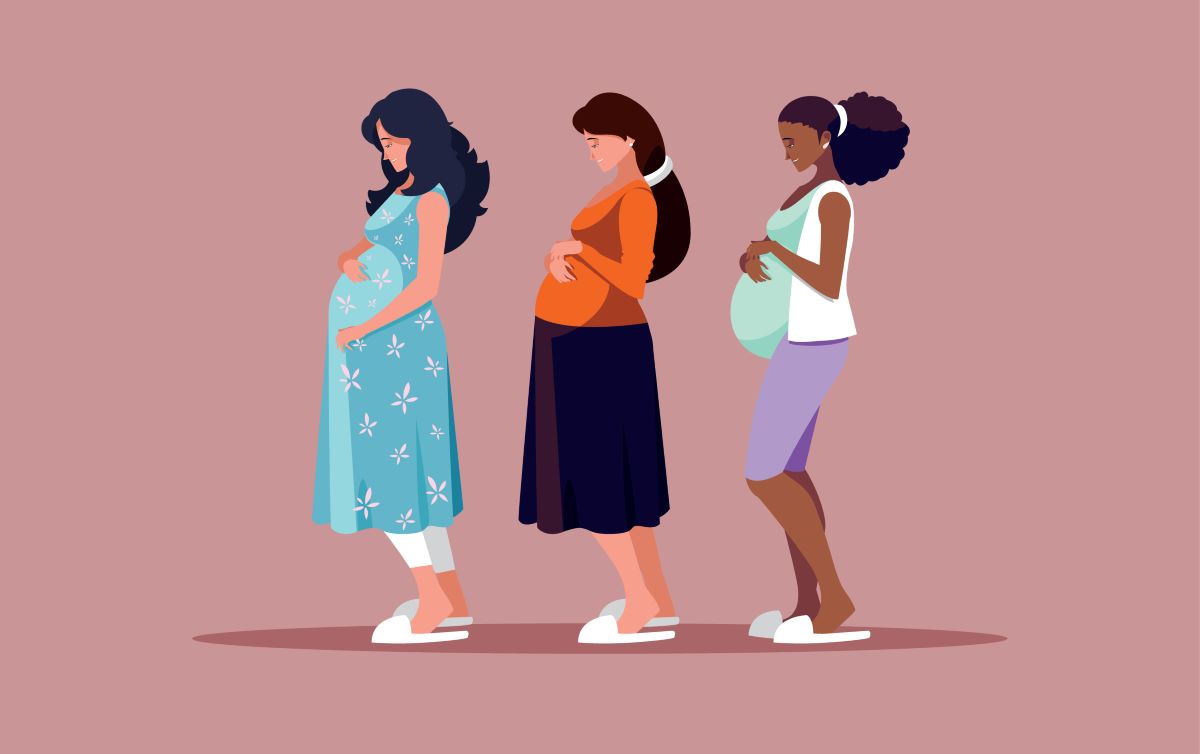Across millennia, women have given birth during many crises.
Through world wars, volcanic eruptions, or medieval plagues, countless people have had to adapt to their changing surroundings while tackling the challenges of bringing a new person into the world.
During the most life-altering crisis of our time, it is no different.
Pregnant women around the world have had to change how they give birth due to the COVID-19 pandemic. From entering the hospital, to labor and delivery, to recovery and inpatient postpartum settings, much of the birthing process looks different now.
Not every person has the same birthing experience—both during the pandemic and before it—and the differences are often linked to societal and economic inequalities.
Disparities in Birth Safety
Before COVID-19 ever entered the world arena, there were already disparities in how women in the U.S. experience medical care while giving birth.
Black and Native women are two to three times more likely to die from pregnancy-related causes such as cardiomyopathy, thrombotic pulmonary embolism, and hypertensive disorders than white women. Most of these deaths are preventable.
For women over 30, the pregnancy-related mortality ratio (or PRMR) for Black and Native women rises to four to five times higher than for white women.
These horrifying statistics stem from a complex variety of factors. This includes everything from women of color having health insurance less frequently than their white counterparts, not being believed by medical professionals when they say they are in pain, or living in areas without accessible and affordable healthcare nearby.
Black, Latina, Native, and Asian women are all too often short-changed or condemned by the U.S. healthcare system. During such crucial moments as giving birth, proper and compassionate care is more important than ever.
What Is Birthing Like Now?
As with much of normal life, giving birth looks different during COVID-19.
Many expectant mothers have had to wear masks during labor, keep medical staff informed of any COVID-19 symptoms, and limit their visitors while at a medical center and afterwards during recovery. This can have a range of effects on women, from making an already intense experience uncomfortable to seriously worsening postpartum depression due to required social distancing measures.
In addition to all of the health risks that already existed in women’s pregnancies and births, the CDC has stated that pregnant women are at an increased risk for severe illness from COVID-19 compared to non-pregnant women. Catching this virus can cause adverse pregnancy outcomes such as preterm birth.
While COVID-19 is uncommon in newborns and most who tested positive had mild or no symptoms and recovered, the disease can exacerbate existing health conditions for mothers, such as obesity or diabetes, and put them at further risk.
For many women, the possibility of further complications due to COVID-19 rises. New mothers are advised to stay at home while caring for their newborns or rely on healthy caregivers to help. However, this may not be an option for everyone due to economic factors.
Black and Latina women are simultaneously more likely to be unemployed due to the pandemic and overrepresented among essential workers who must leave the house and risk infection to retain their jobs—a phenomenon that has been recently dubbed a “racial justice paradox.”
In general, women are disproportionately and adversely affected by COVID-19, particularly in the workforce. Women have lost over 5 million jobs during the pandemic, which is nearly 1 million more than men. With the increased pressure to care for others at home, women have borne the brunt of the economic recession resulting from COVID-19.
How to Repair the Damage
In order to reduce the vast disparities in birth and pregnancy safety among women, all of the contributing factors need to be addressed.
The CDC recommends that hospitals and healthcare systems implement standardized protocols to improve the quality of medical care provided, particularly in communities affected by poverty.
Other crucial steps to ensure women’s health during COVID-19 include:
- Bias training within medical professional circles
- Improved health communication through interpreters and translations
- Connecting all women, with an emphasis on women of color, to accessible sources of health care
These steps are the key to dismantling inequalities for pregnant women, as well as in other parts of society, such as communication and accessibility, to help the people who need it most.
Learn more about how G3 Life Sciences can aid your communications, translations, and interpretations for those in need by contacting us here.
